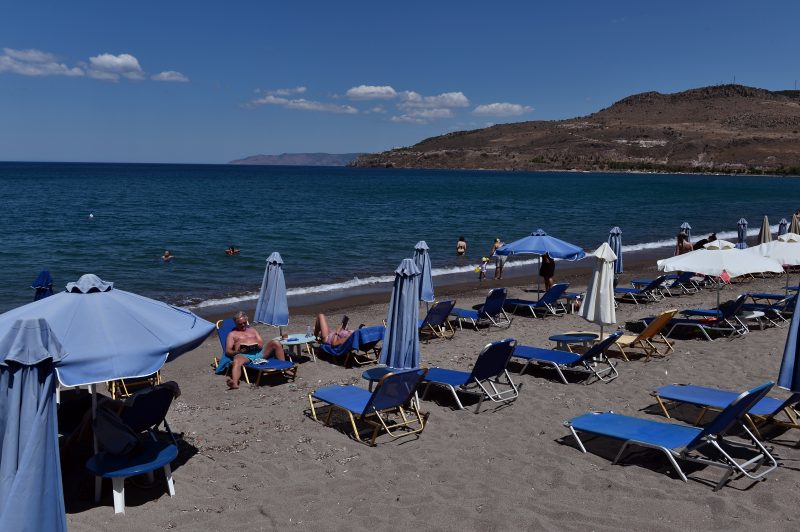Lesbos keen to woo back tourists after migration crisis
Tourist numbers have dropped dramatically on the Greek island of Lesbos as a result of the migration crisis (LOUISA GOULIAMAKI)
Lesbos Island (Greece) (AFP) – In the summer of 2015, thousands of tourists were lounging on beaches on the island of Lesbos, one of Greece’s top alternative travel destinations.
The home of archaic poetess Sappho, Lesbos used to draw holidaymakers for its stunning blue waters, picture postcard villages, sun-baked olive groves, mediaeval fortress and world-famous petrified forest.
But that all changed when inflatable boats began to arrive in droves, carrying thousands of traumatized refugees fleeing civil war in Syria.
Lesbos became the main point of entry to Europe for the terrified, shivering migrants who had risked their lives trying to cross the Aegean Sea and find safety.
It was also where many of the bodies washed up of those who had tragically drowned in the attempt.
“2015 was a very good year for tourism and then, suddenly they started to arrive,” said Maria Dimitriou, a shop owner in the mediaeval village of Molyvos in the island’s north, where many of the refugees’ boats landed.
The refugees began arriving in mid-July, when the hotels were full of tourists, Dimitriou told AFP.
“There were refugees everywhere, lying down with all their trash. And after this, tourism stopped.”
In 2015, alone, more than 500,000 refugees, mostly Syrians, arrived in Lesbos.
Smaller numbers — but enough to overwhelm local authorities there as well — landed on the islands of Chios, Kos, Samos and Leros.
Almost overnight, Lesbos became a byword for Europe’s migration crisis.
And that notoriety persists even today — much to the consternation of locals.
Vangelis Mirsinias, head of the Lesbos chamber of commerce, said inhabitants now wanted to rebuild the island’s reputation and woo back the tourists.
“We want to remind people of how beautiful this island is,” Mirsinias said.
Lesbos is also home to Plomari, one of the most popular ouzo brands in Greece.
There are still over 6,000 refugees and migrants on the island, and the main camp of Moria is still overcrowded, despite the authorities’ efforts to transfer refugees to the mainland.
Tourist numbers have dropped dramatically — from 75,000 in 2015 to 32,000 in 2016, according to chamber of commerce data.
The number seems to be on the rise again, reaching 63,000 last year and charter flights are returning.
But cruise ships are not, local operators complain. Only eight are expected this year, compared to 94 in 2011 and just a single one in 2018.
Paris Laoumis, who owns a tavern on the beach of Skala Sykamias, said some of his Dutch customers had stopped coming after 2015.
“They told us they did not feel like seeing all this misery,” he said.
At the height of the crisis, his tavern acted as makeshift headquarters to an army of foreign media and rescuers. And the owner himself lent a hand in pulling half-drowned refugees out of the water.
– ‘Swimming where others drowned’ –
“People don’t want to swim where (others) drowned,” said Vato, a local mother and volunteer.
“And around the camp of Moria, there is always a lot of concern about prostitution, drug trafficking and theft,” she said.
The island’s beaches have been cleaned up for the coming season.
But further inland, in the middle of green hills, a mountain of discarded life jackets bears witness to the scope of the migrant crisis.
Michalis Michilakellis, a local souvenir seller, said he has lost a third of his business. He blames all the negative media attention.
The locals were “fed up”, said volunteer Vato.
“People are angry towards the government and towards Europe: they told us not to worry, the camps won’t last. But it’s still there.”
Chamber of commerce chief Mirsinias suggested the European Union should provide funding to help repair the island’s image.
“The economy is still paying the impact of the crisis, and the smugglers keep sending people,” he said.
“It will need time and money to change this image,” estimating that around half a million euros were needed.
Disclaimer: Validity of the above story is for 7 Days from original date of publishing. Source: AFP.


